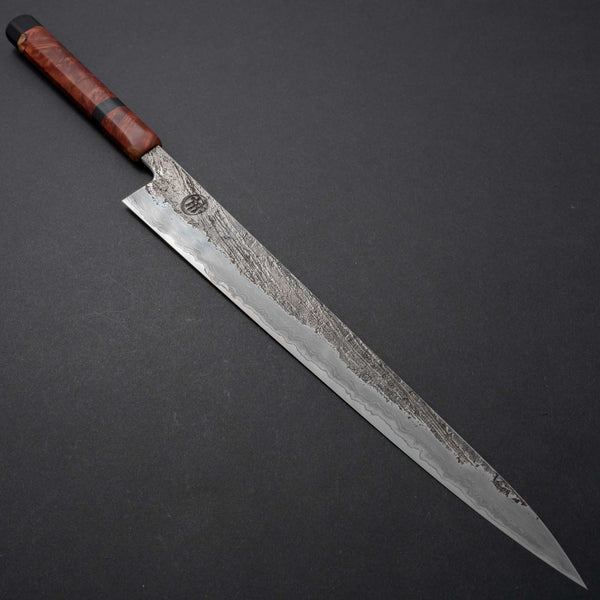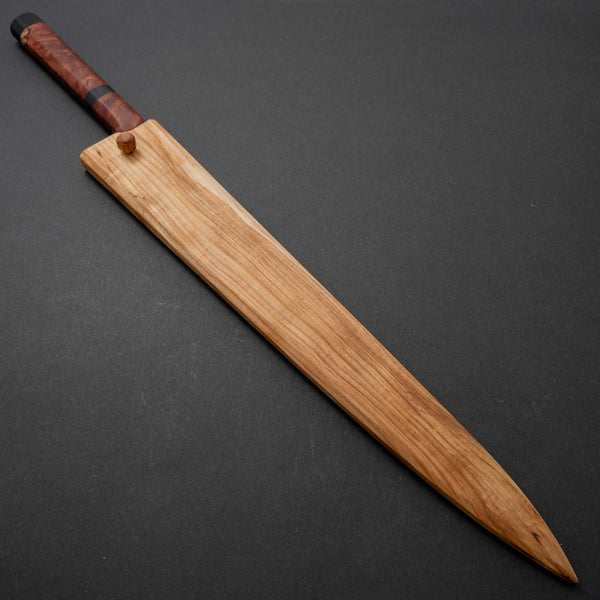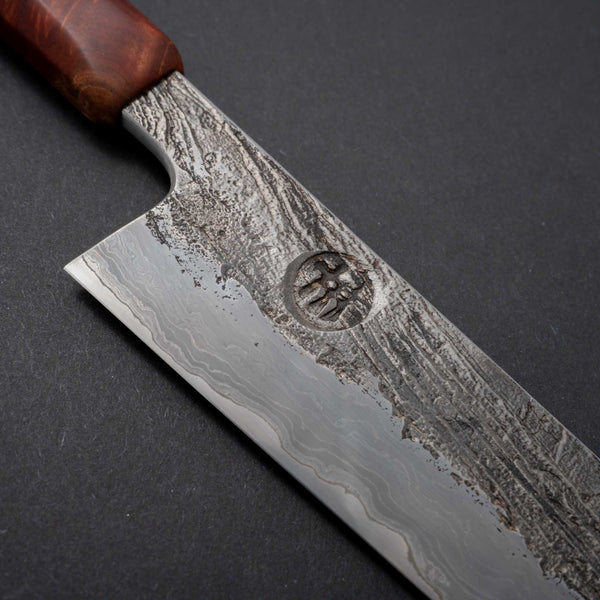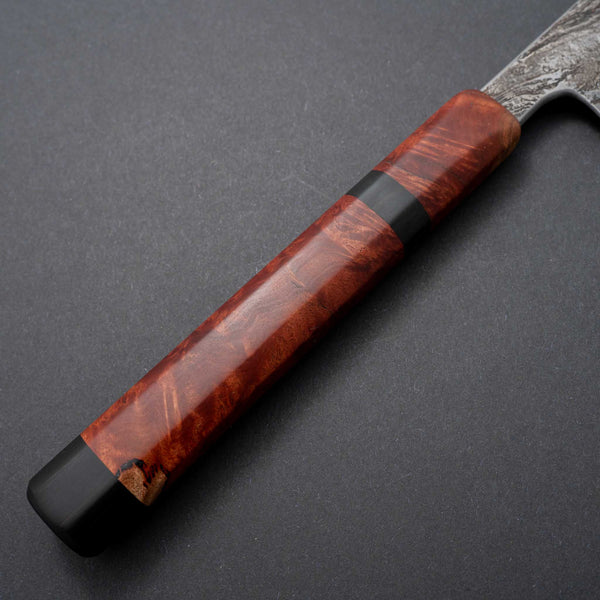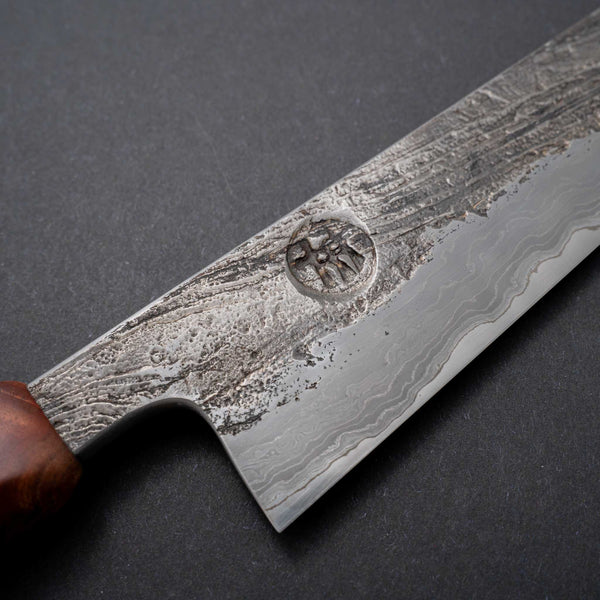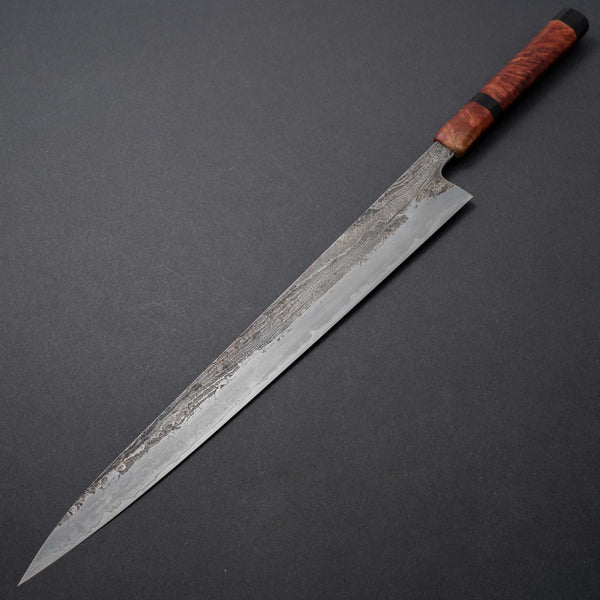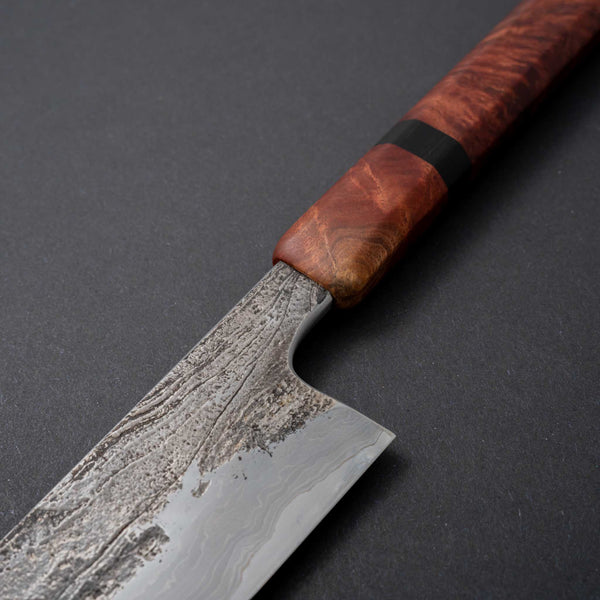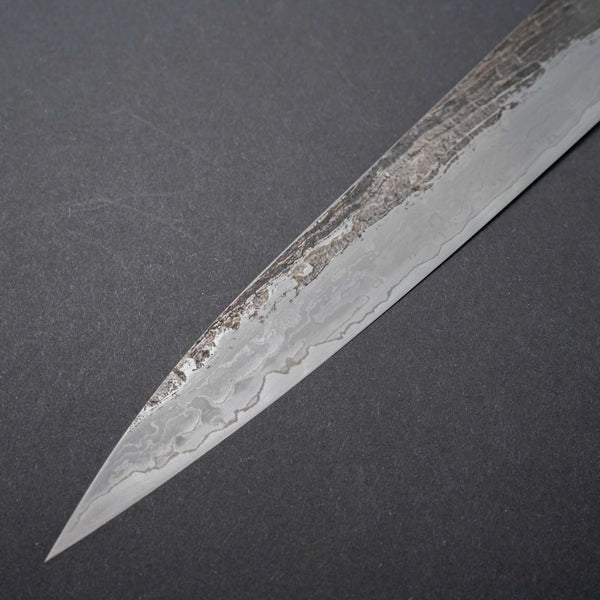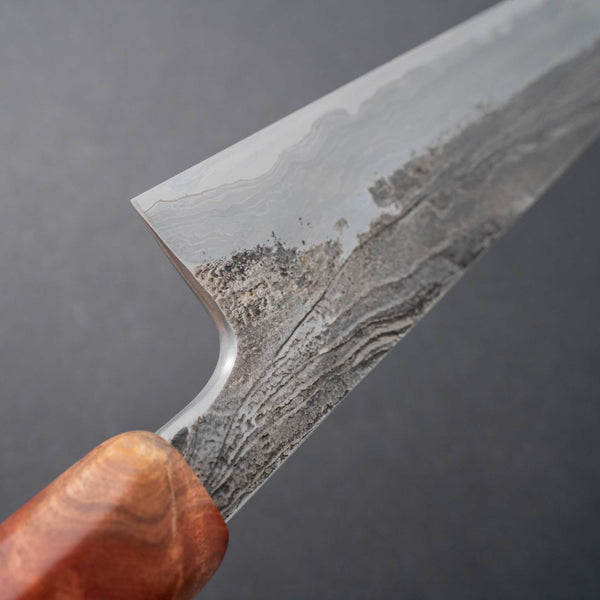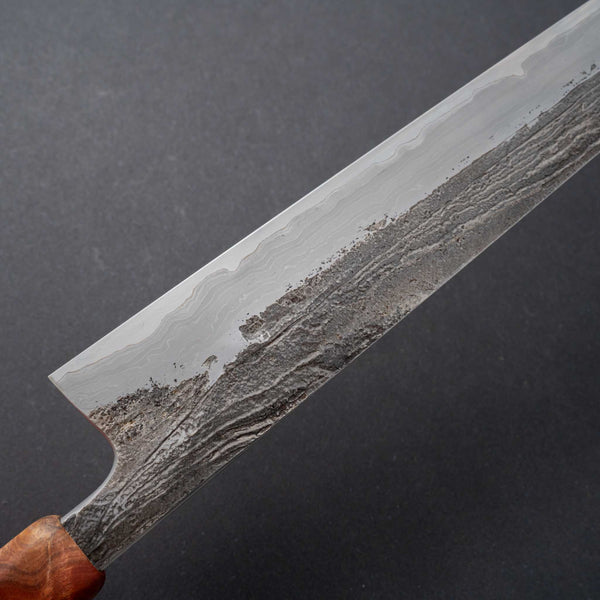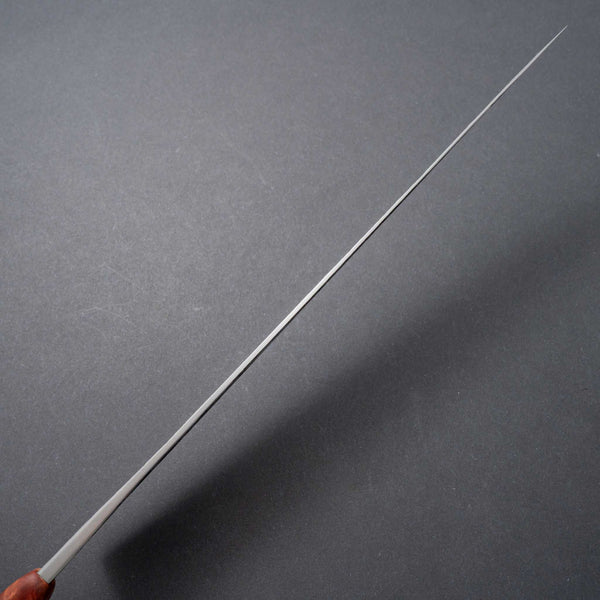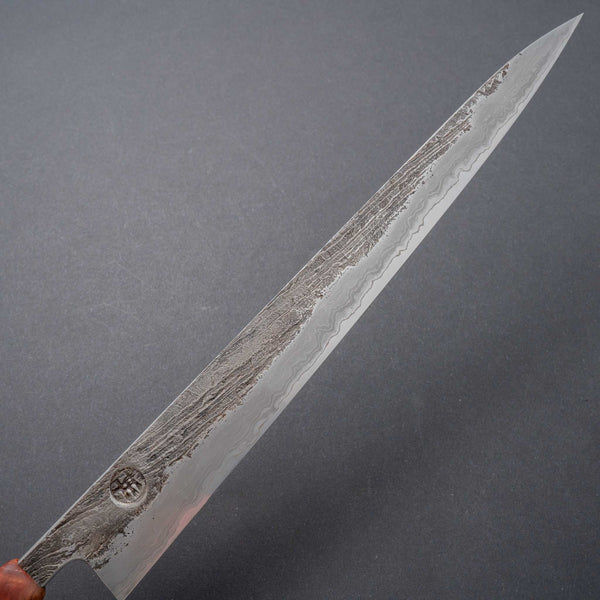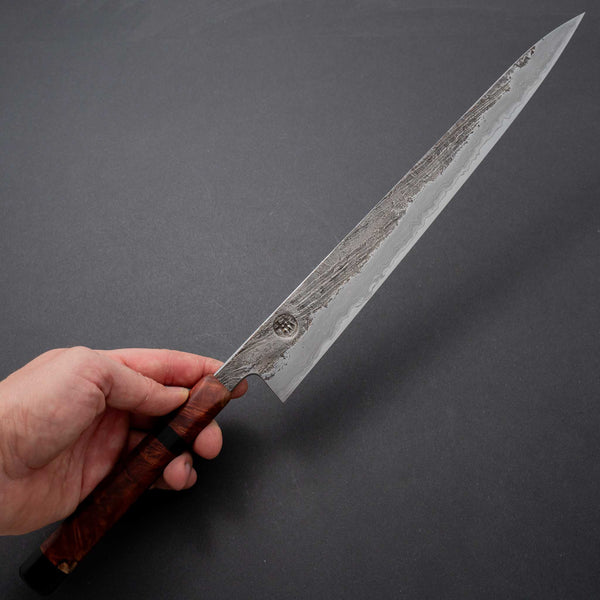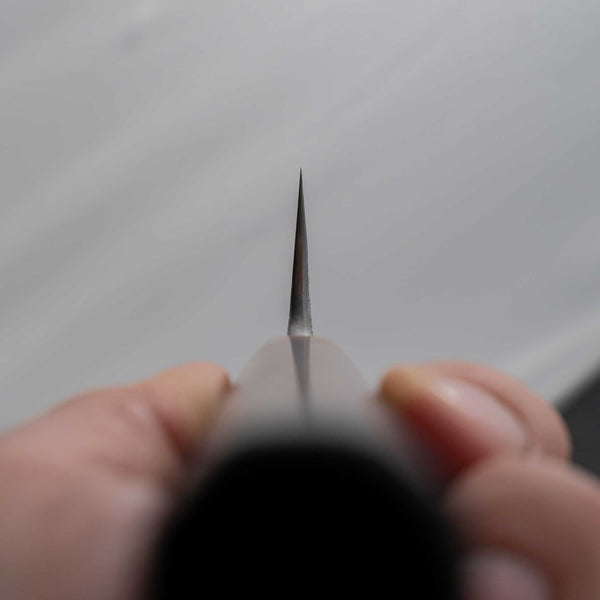Fully Handmade Knife by Swedish Maker Tobias Heldqvist. A Stunning Sujihiki With a wrought Iron/Nickel Twist Cladding and A C130 Core. The act is made of eucalyptus and ebony details. The leaves have a nice taper, from a thick tang at the act to a super thin tip. The Balance Point Is Right At Pinch Grip, Which is Impressive for Such A Long sujihiki.
The Knife Has A Matching Saya.
Brand: Tobias Heldqvist
Smith: Tobias Heldqvist
Producing Area: Sweden
Profile:Sujihiki
Size: 320mm
Steel Type: Carbon Steel
Steel: YC130, WRUGHT IRON/NICKEL CLADING
Handle: Eucalyptus with Ebony Details
Total Length: 490mm
EDGE LENGTH: 325MM
Handle two tip length: 340mm
Blade Height: 40mm
Thickness to act: 6mm
Thickness at the Middle: 2.2mm
Thickness 10mm from Tip: 0.7mm
Handle Length: 151mm
Weight: 200g
Hand Orientation: Ambidextrous
Maintenance & Care
CARE AND MAINTENANCE:
NEVER PUT YOUR KNIVES IN THE DISHWASHER! That's it, and it applies to all knives. There are far too many chemical processes and changing heat effects for it to be good for anything made of steel. Most stock material cannot withstand it either.
You can roughly divide knives into two categories when we talk about care and maintenance; carbon knives (carbon knives) and stainless/semi stainless knives.
Carbon steel can be sharpened insanely sharp and holds an egg well (edge retention), but can rust and patina. Stainless steel has the advantage of being less prone to rust, but is not quite as sharp. Roughly speaking, because there are gradually many stainless "super steels" that have close to the same properties as carbon steel.
USE
Pay attention to how hard the knife is hardened. Be especially careful with knives of 60 hrc and above. Hard foods can "chip" the blade. Be careful with fruit stones, bones, shellfish, woody stems or very hard cheese. Frozen foods are a total no-go.
Your cutting board plays a big role. Use wood. Endwood is particularly good. Plastic can also be fine, but definitely not glass, granite or bamboo. Hinogi (cypress) is particularly good and otherwise there are from the very top shelf, rubber cutting boards with wooden handles.
Scraping the edge of the knife sideways will dull or damage your knife. Instead, use the back of the knife to move items across the cutting board. Do not twist the edge or pry the tip and for the record, your knife is NOT a screwdriver!
CLEANING
After use, wash the knife by hand with ordinary washing-up liquid, rinse with warm water and dry immediately. No dishwasher! Highly reactive steel, such as white #1, can be advantageously wiped off regularly during use. These types of steel can benefit from a little oil on the steel from time to time.
Wooden handles can dry out over time and exposure to water. Simply treat them with some food-safe mineral oil or beeswax. Can possibly lightly sanded with sandpaper before and after.
STORAGE
Take care of the egg, for your own sake and the sake of the knife. A saya (sheath) is optimal, but a simple blade cover will be fine if you store knives in a drawer or travel bag. Loosely lying in a drawer is a super bad solution.
A wall magnet made of wood is a great way to display your knives. Be sure to put it back on the spine first, then roll it on the surface of the blade. This will prevent the egg from making contact with the tree first. Steel knife magnets are a bad idea as they will scratch the blade of the knife.
Knife blocks are not optimal, neither for the egg nor for hygiene.
MAINTENANCE
All knives should be straightened before each use. This is best done on a leather strap. Steel irons are unsuitable for knives with a hardness of 59 and above. A ceramic version can be used here, but you have to be aware that it will grind and remove steel every time you use it. It is not appropriate if the egg simply needs to be "raised". We can help with leather straps and their use.
When the knife gradually becomes so dull that a definite sharpening is unavoidable, this is best done on a wet stone or a slow-moving sharpening machine. If you don't have the skills or the courage, drop it off with us and we'll take care of it.

